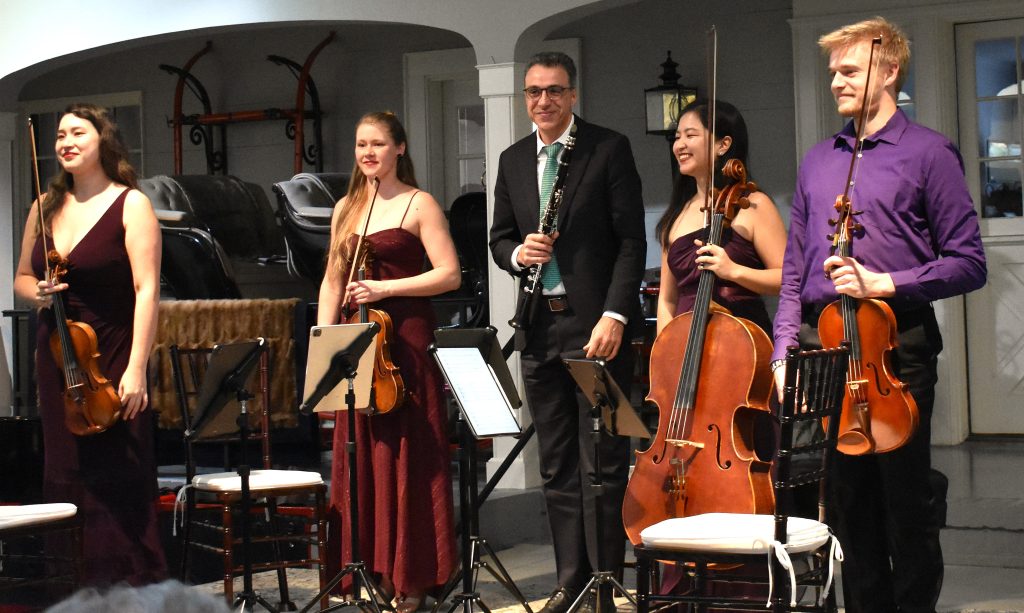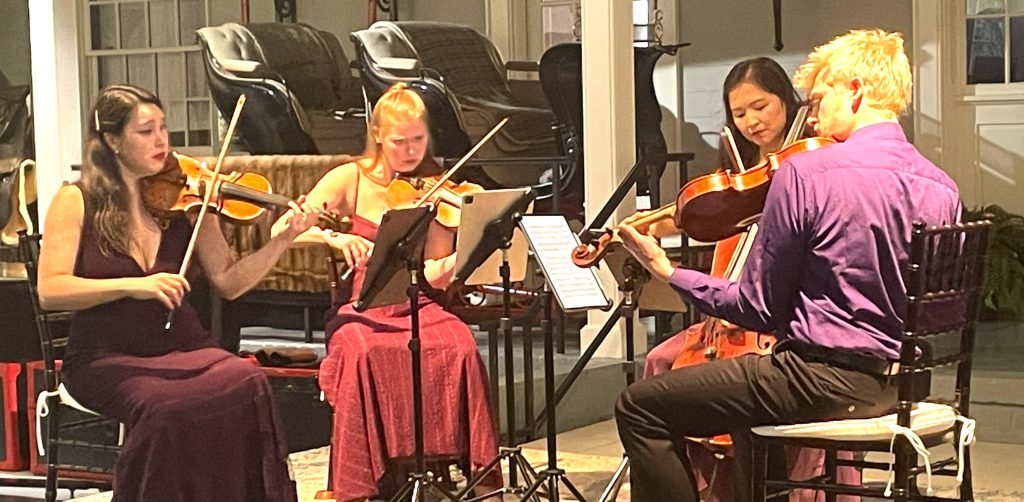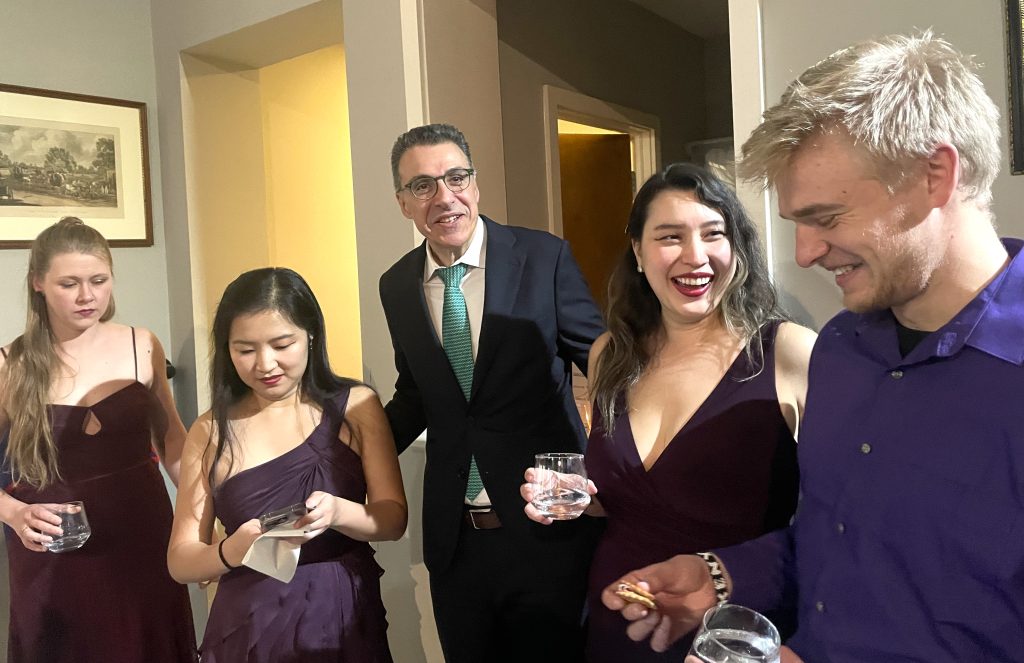
by Kevin T McEneaney
This sold-out event in the carriage house opened with a recent composition by Seth Grosshandler, pianist, painter, lawyer, and composer. Seth was present at the event.
Dances for string quartet (2024), structured in five movements with post-modern brevity, each roughly two minutes long, opens with a Prelude by the first violin, Christina Bouey, offering a genial, lyrical, and inviting ambiance on the theme of dancing. The second movement, Passacaglia, presented a series of melodic variations with a cello lead ably articulated by Grace Ho. The Corrente, a fast-paced triple meter dance pattern favored by Baroque composers, showcased the first violin. The Minuet, a French social dance in ¾ time, was popular in formal court settings permitted the second violin of Rhiannon Banerdt to shine. The concluding Rigaudon, a folk dance with hopping steps, opened with fierce pizzicato by the first and second violins with reinforcement from the viola, skillfully played by Peter Dudek. This five-part division was an invitational meditation on dancing. The thrilling conclusion, with exuberant unity, displayed the decided preference of the composer.

Thomas Adès, a leading English composer, whose work should be played more often in this country, presented a meditation on evolution. Alchymia for Clarinet Quintet (2021) presented another sequential meditation. The first movement, a chaconne, presented a slow meditative contemplation on the origin of life in the oceans of this planet (with a possible reference to William Shakespeare’s play The Tempest, where the King’s eyes are transformed to pearls).
The second movement contemplates the movement of life to land, especially the great forests of the Earth that once featured trees twice or thrice of contemporary trees (and here there is musical reference to William Byrd’s song, “The Woods so Wild.”)
The third movement, Lachrymae (perhaps a reference to John Dowland’s famous song of lament), spotlighted the excellent, hypnotic, mellow clarinet of Oscar Espina Ruiz, with the appearance of animal and human life, the lacrimal bone being the smallest in the human body. This movement appears to be a lament on the fragility of human behavior.
The final movement contains a reference to the German playwright Frank Wedekind. Here, life appears to be a chaotic cabaret party on questions regarding the future of humankind. There is wild pizzicato from the violin of Christina Bouey. The erupting final movement sounds like a lament for the circus-future fate of unruly and dangerous humankind.
String Quartet in E Minor, Opus 44/2 (1837) by Felix Mendelssohn, written during his honeymoon marriage to Cécile, concluded the concert. Shedding Beethoven’s influence, Mendelssohn moved to a more personal and romantic emotional exploration while retaining classical format. The moody romantic texture of the first movement was dominated by the first violinist, Christina Bouey, supported by the admiring cello of Grace Ho, a musical portrait of Cécile and Felix. The fast-paced Scherzo captures the excitement of their marital bliss. The slow third movement offers sentimental yearning for domestic happiness, while the fourth, concluding rondo-sonata movement features a tight rhythmic tempo with the first violin doing a solo excursion (a paid concert performance elsewhere?), and then a return to home linking to the opening notes of the work: a circular picture of work and domestic satisfaction with the hope of prodigy. This quartet is rarely played, and it was a pleasure to hear it! Each of the three works performed engaged in sequential patterns….
